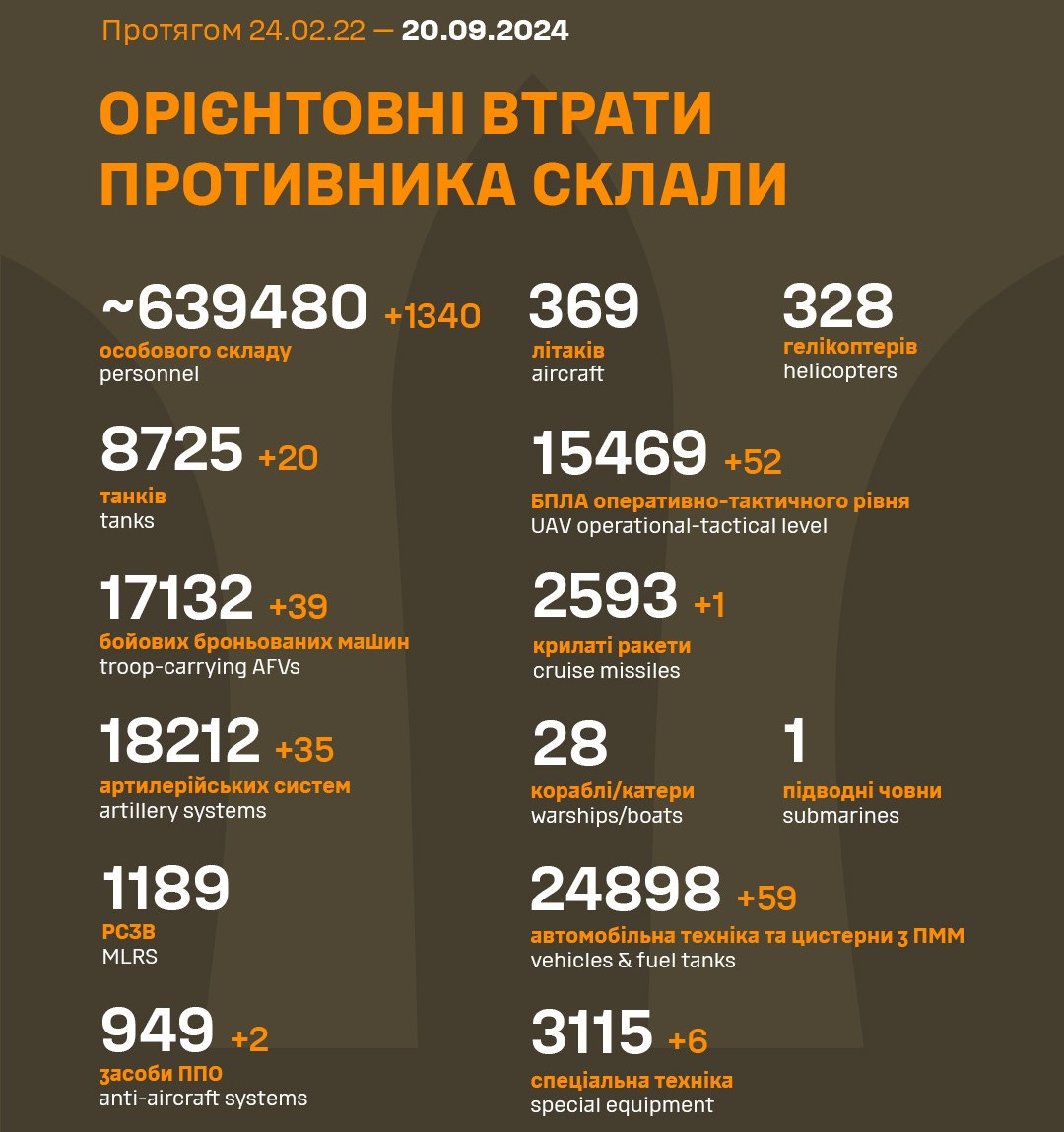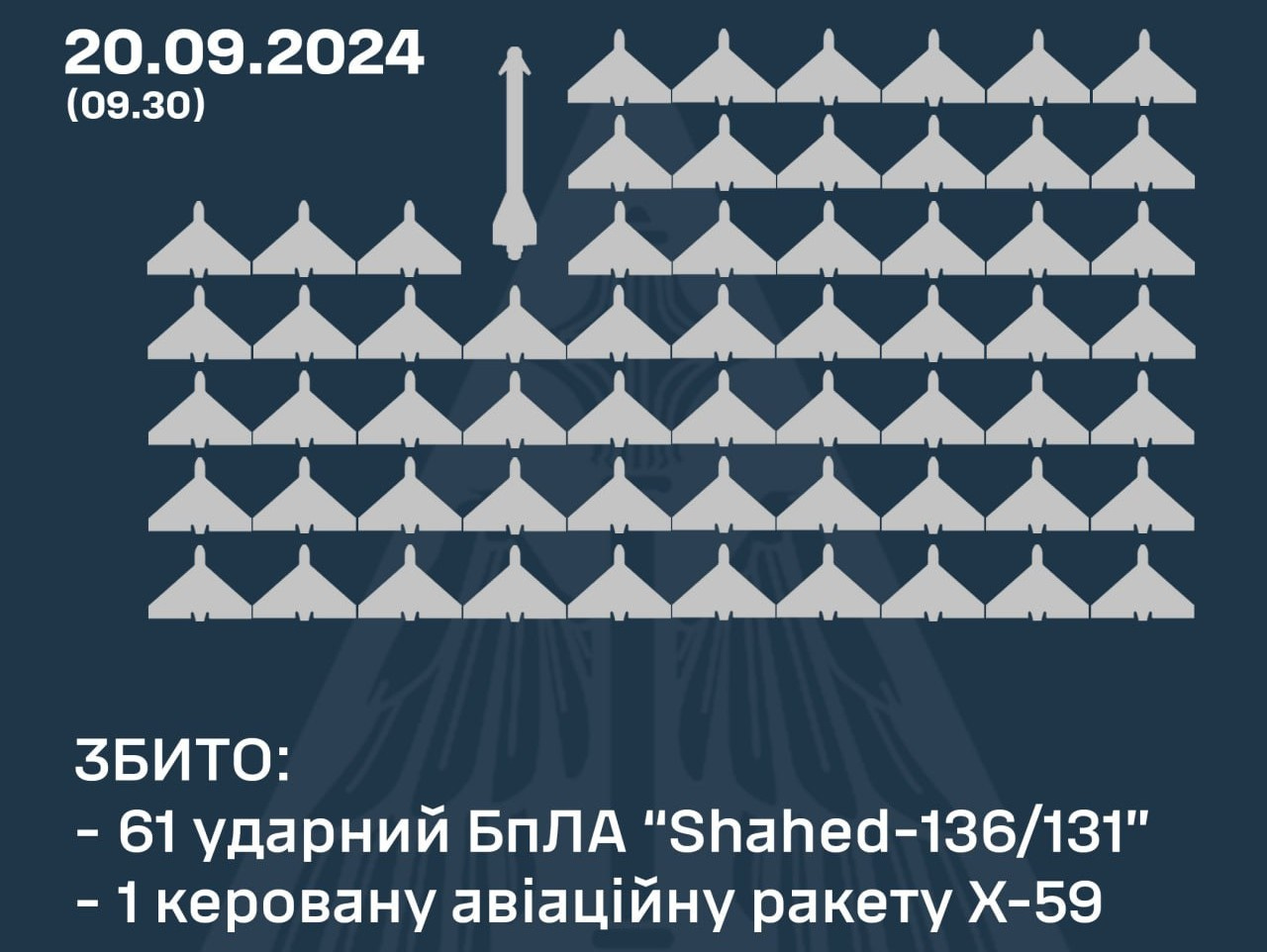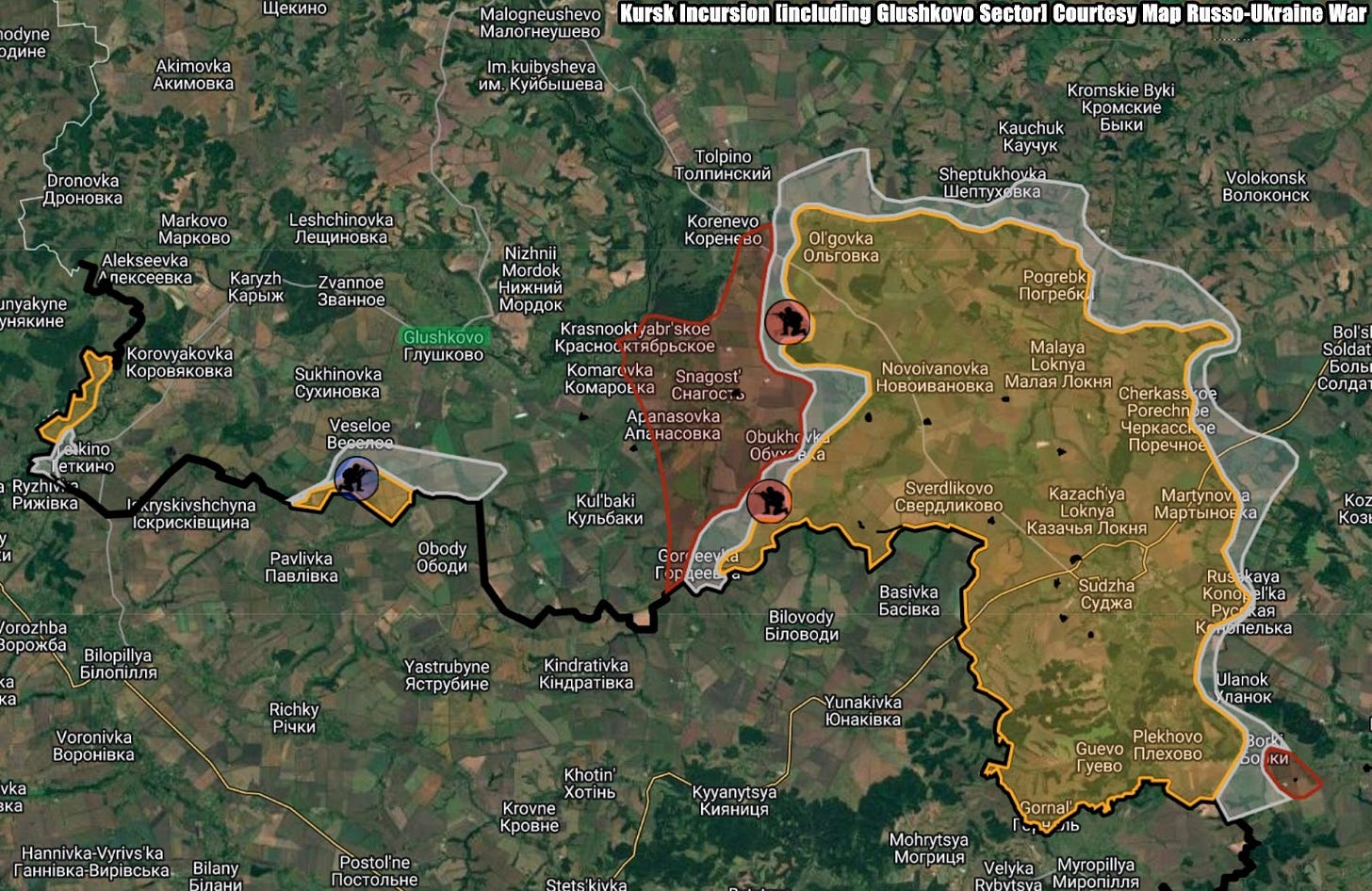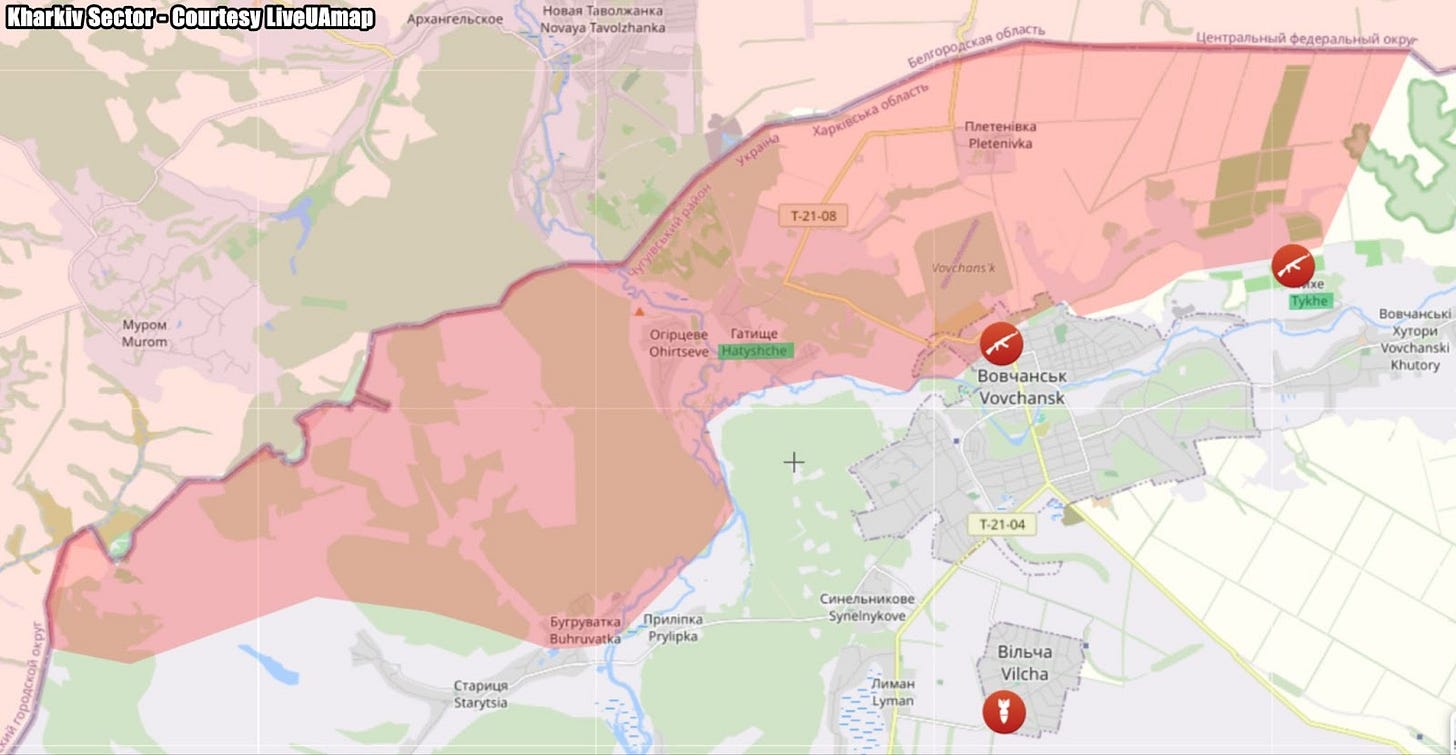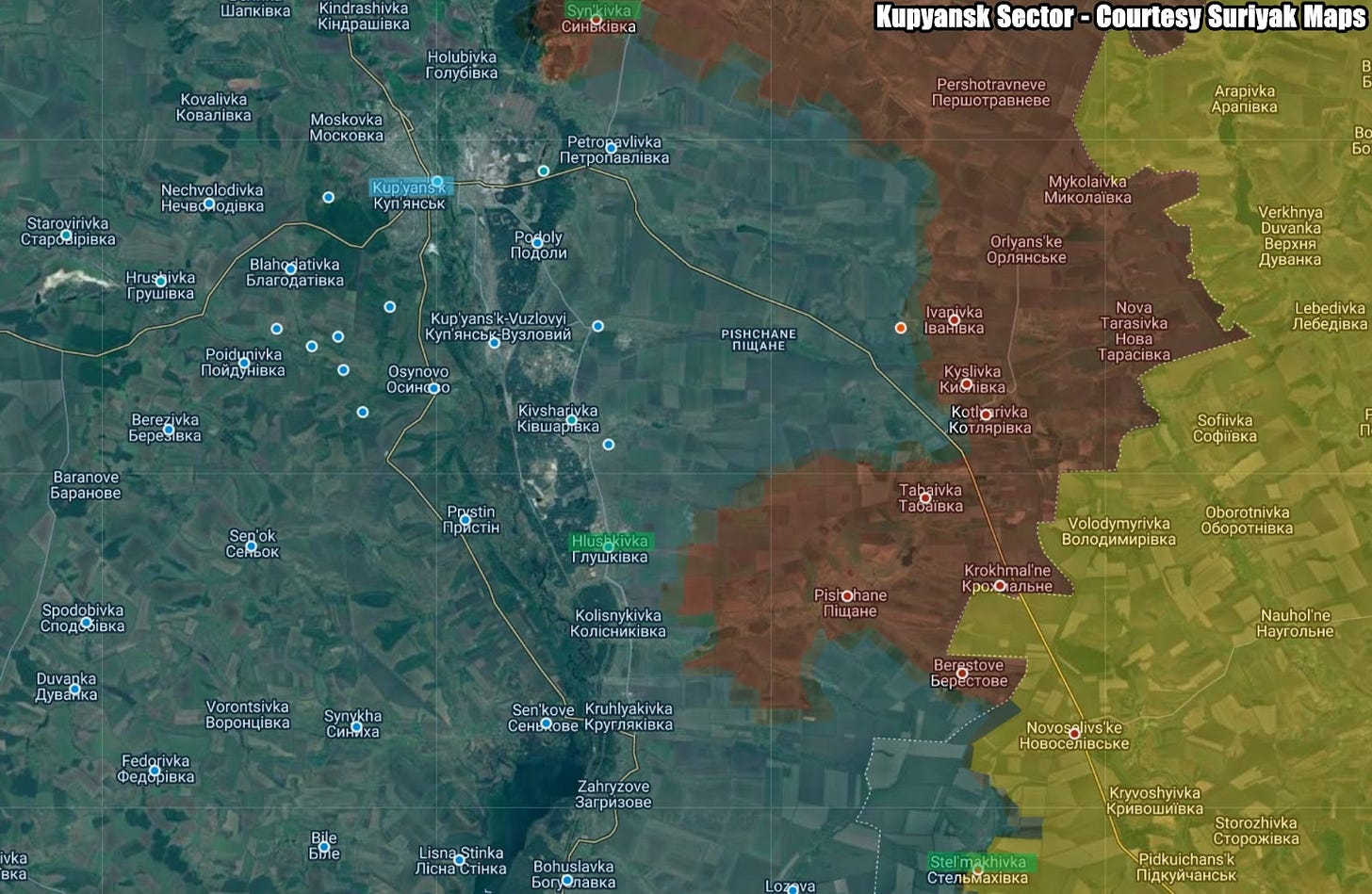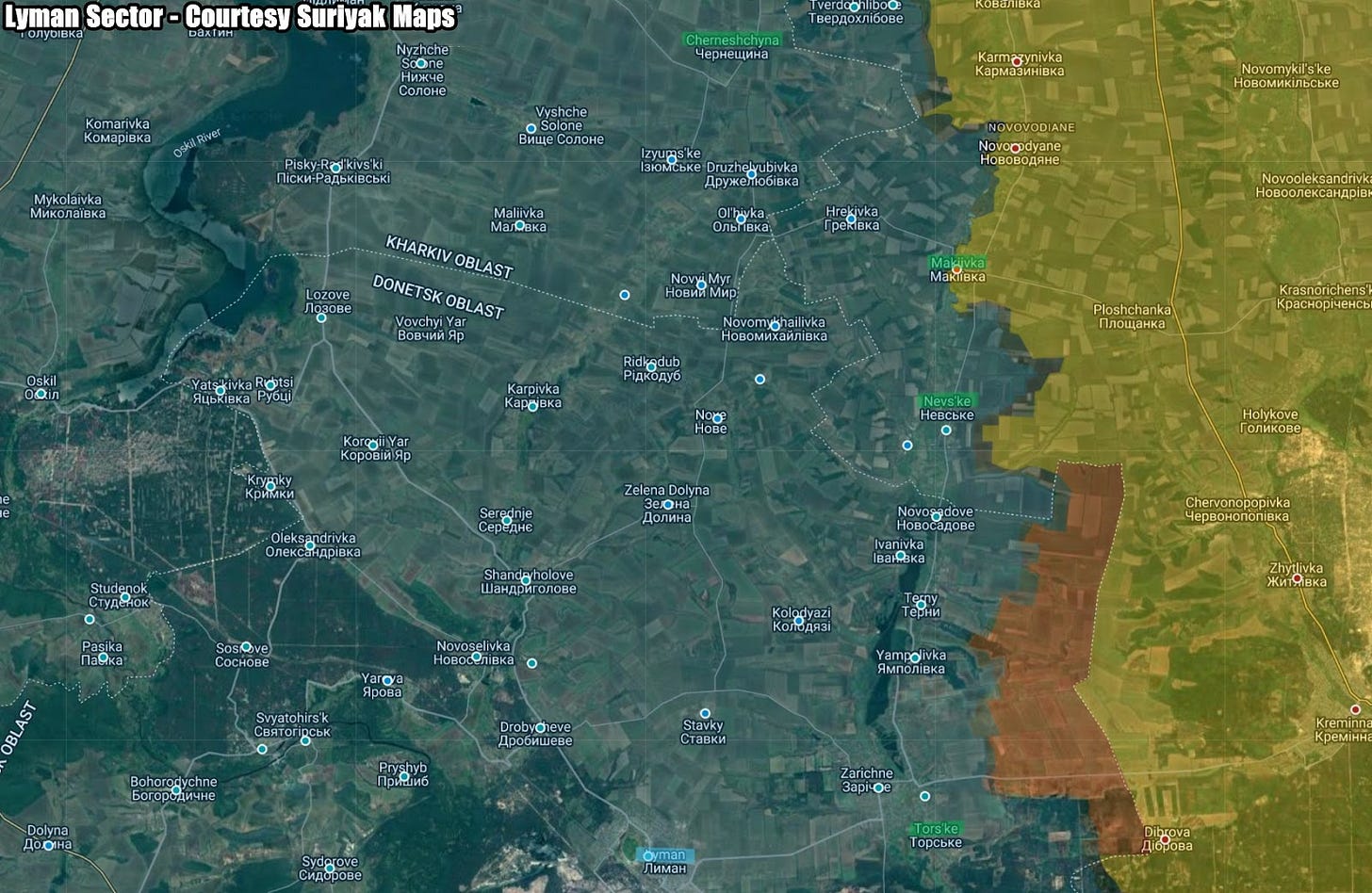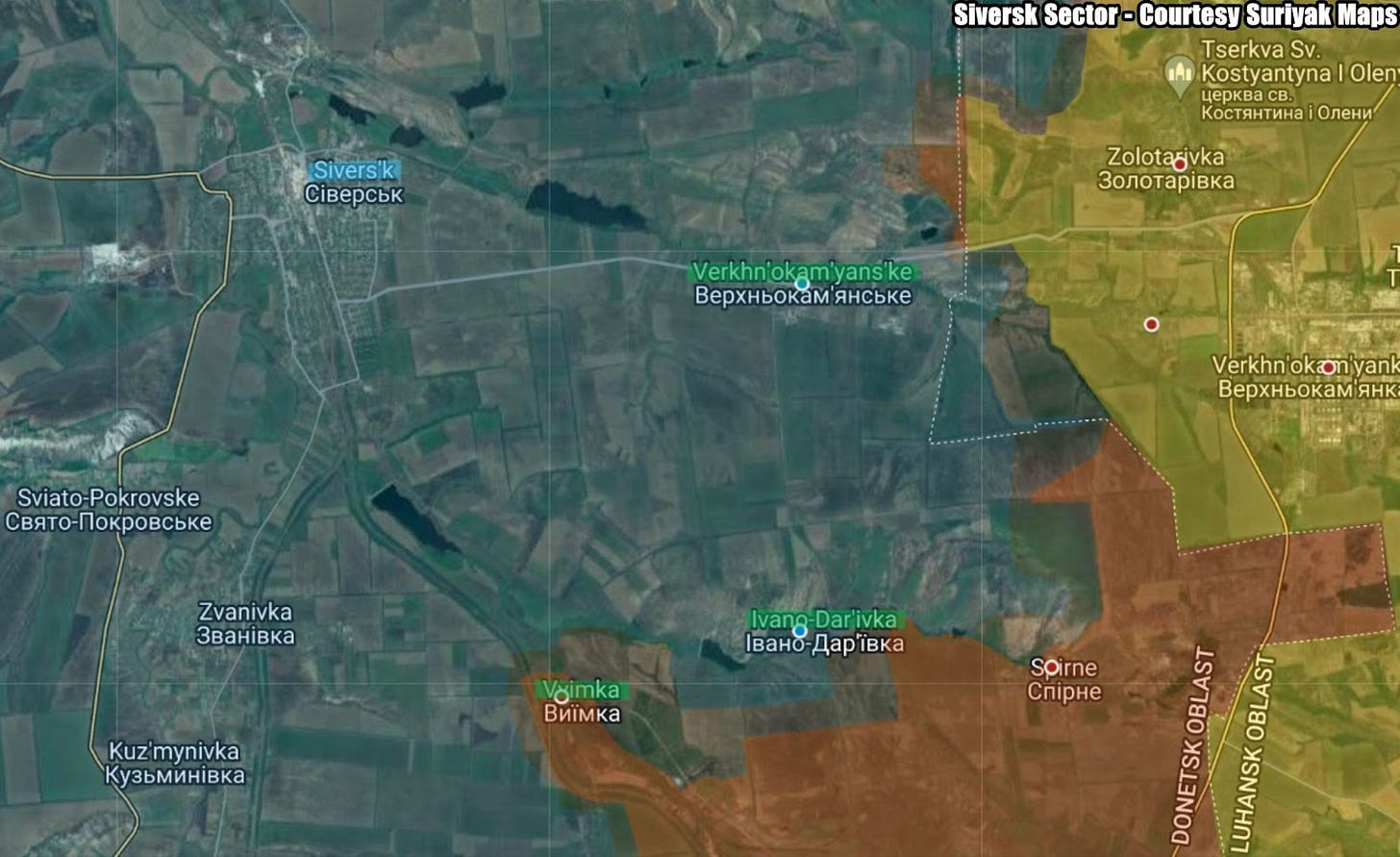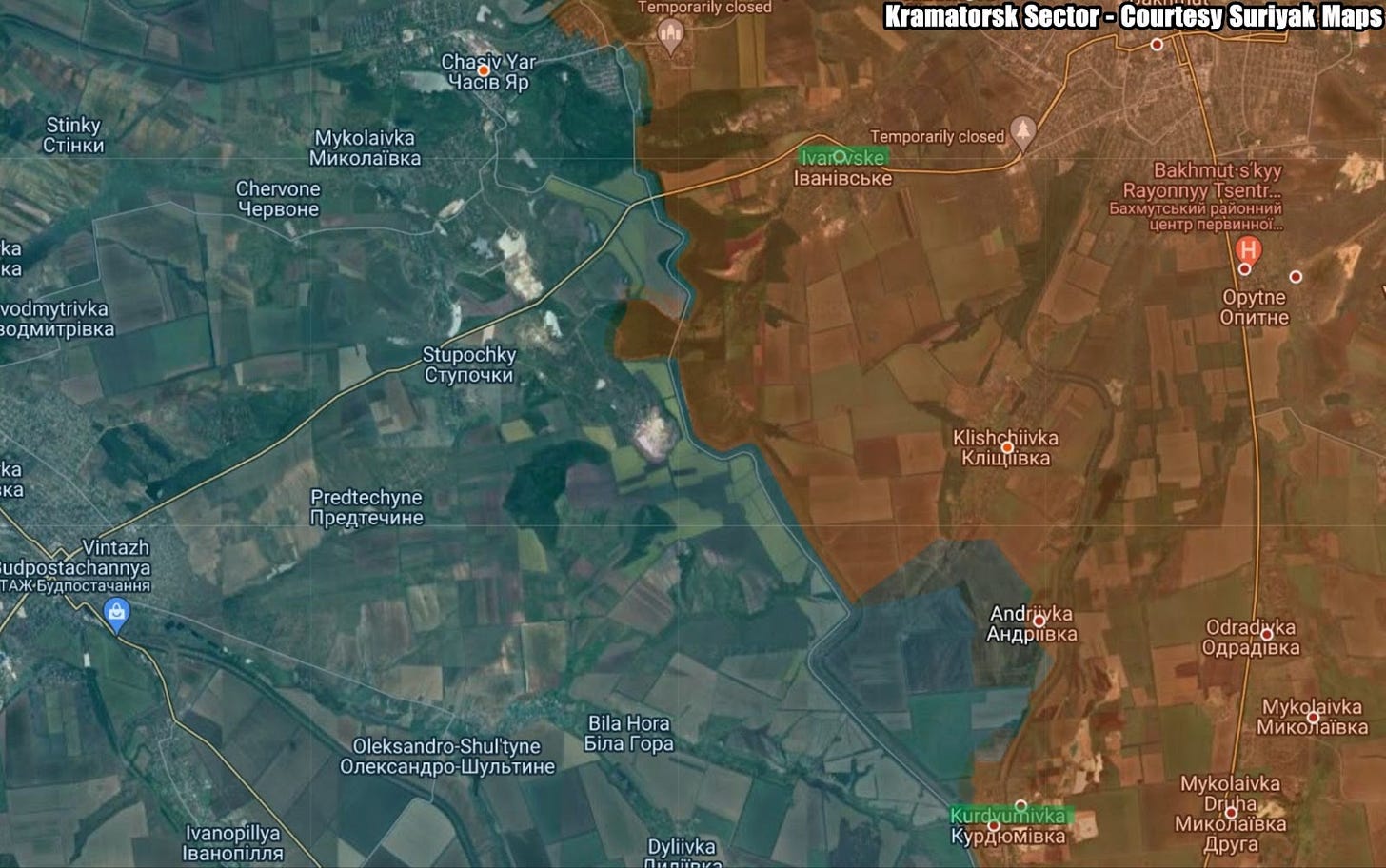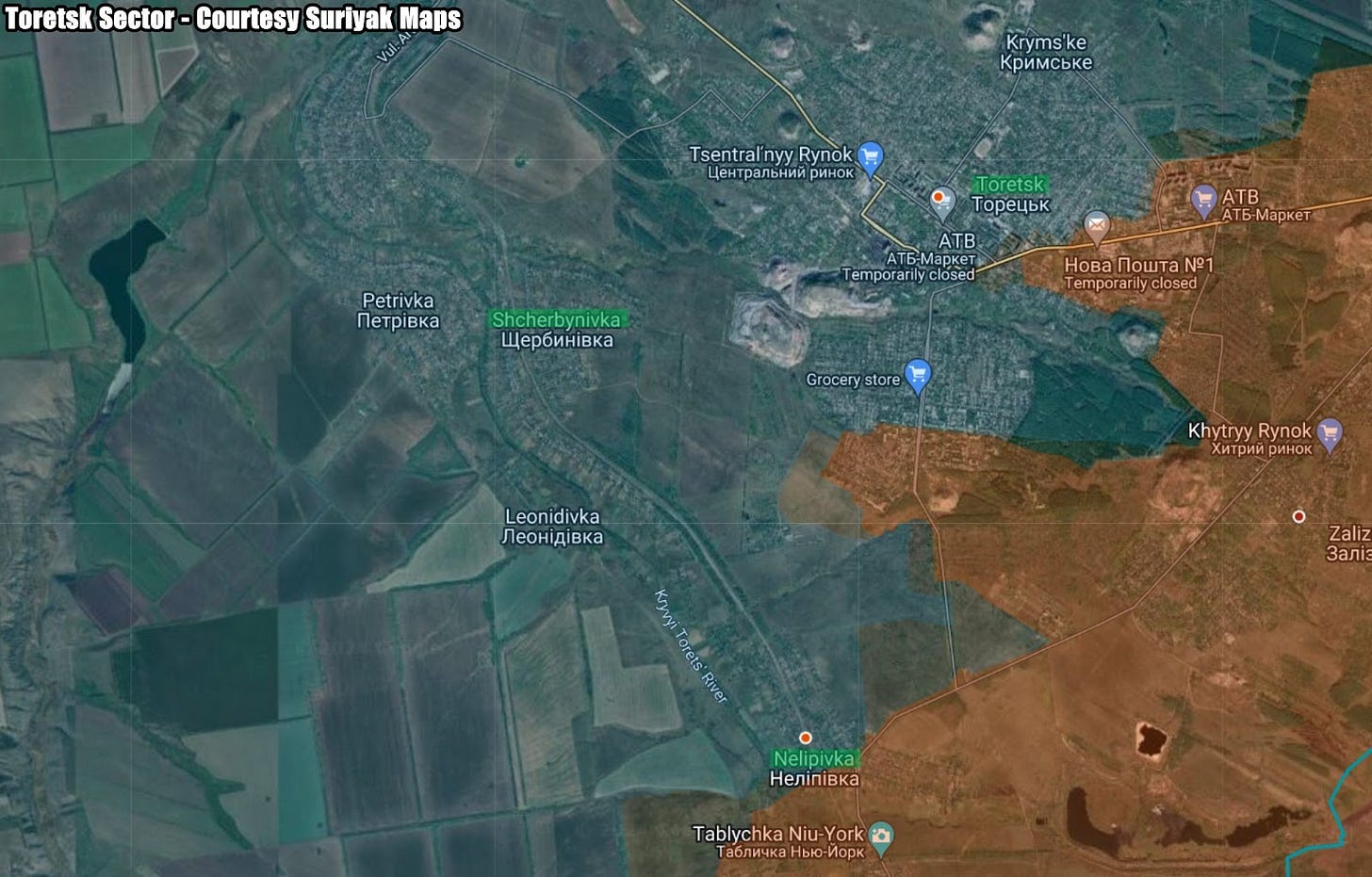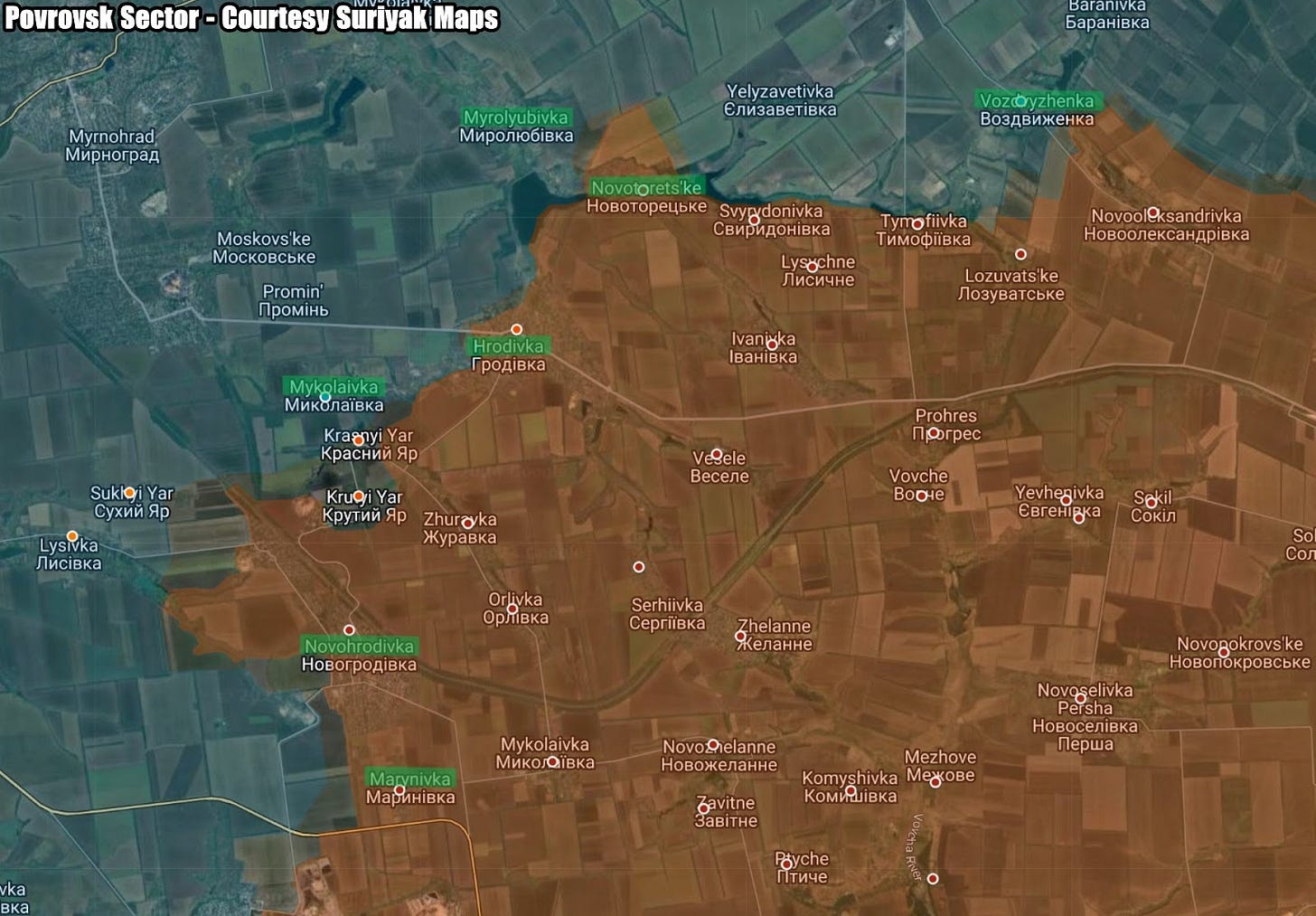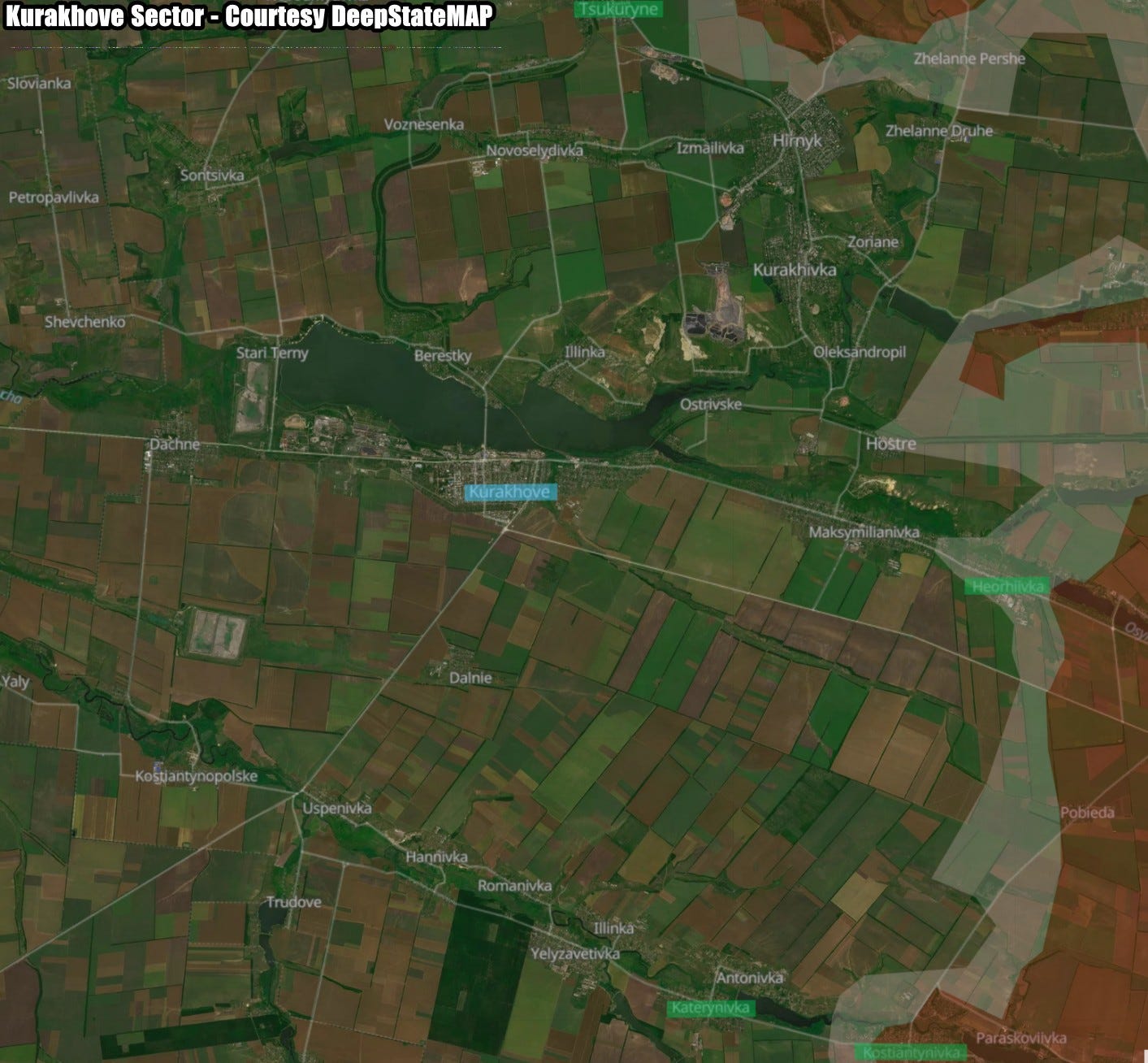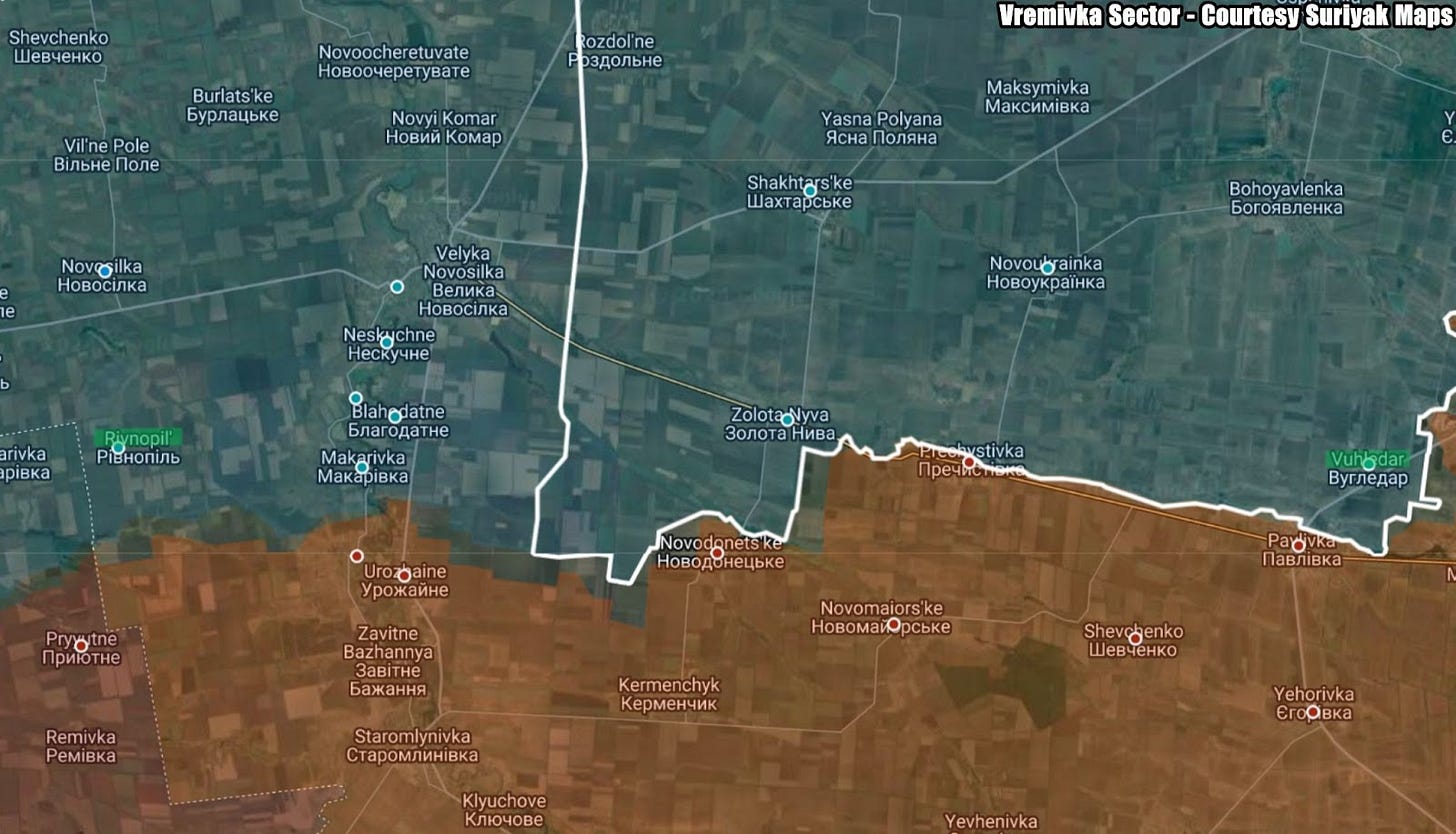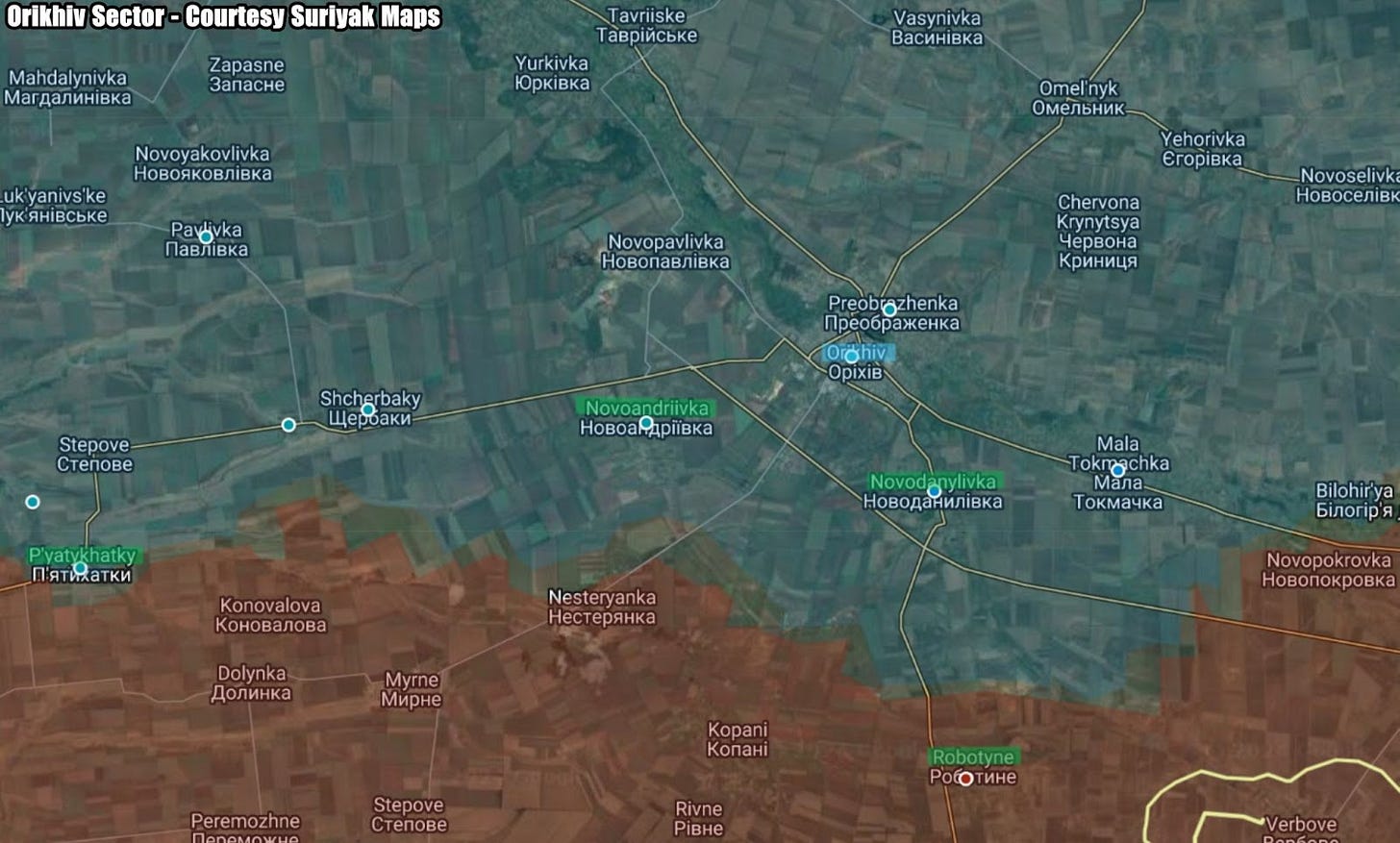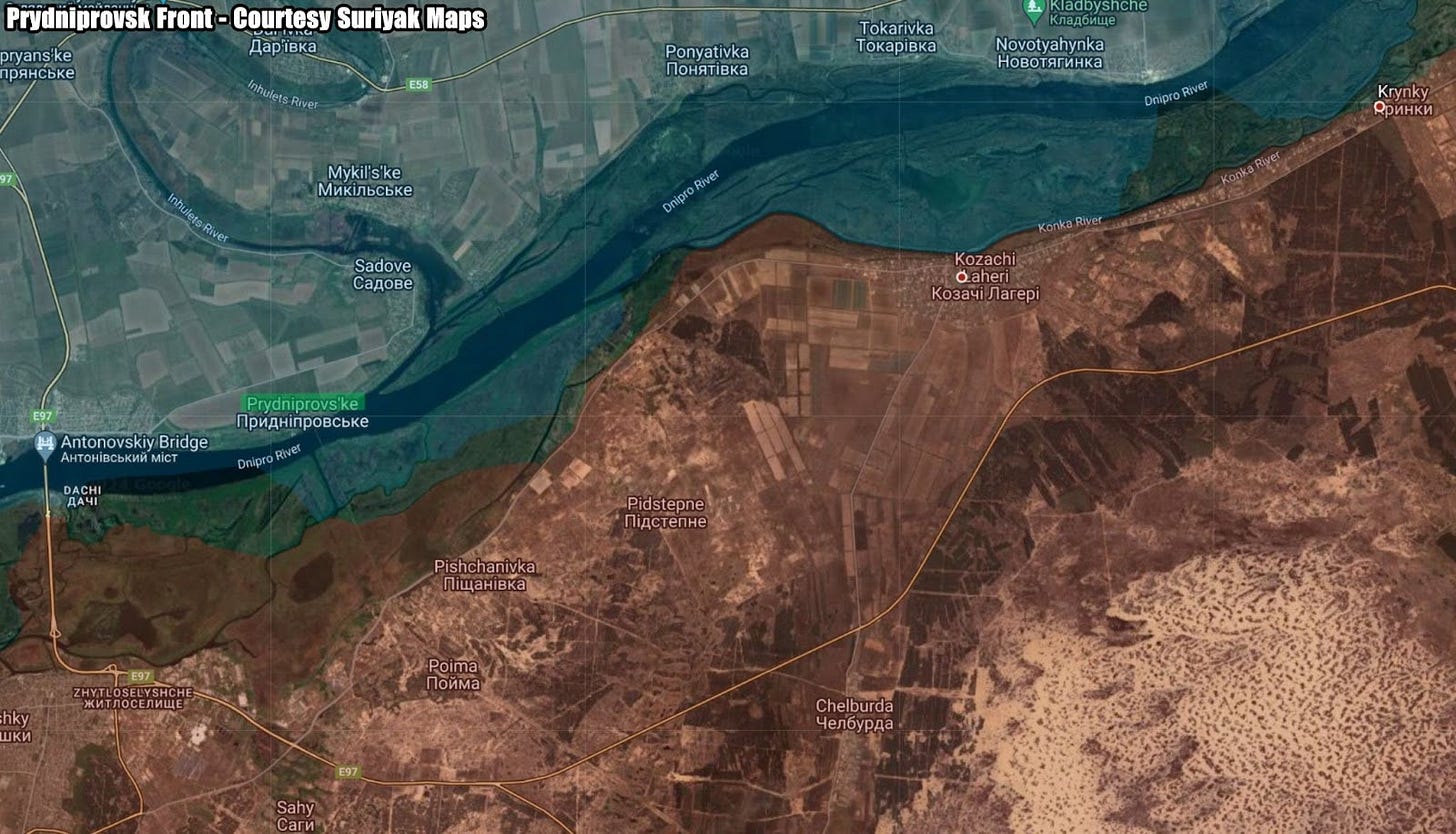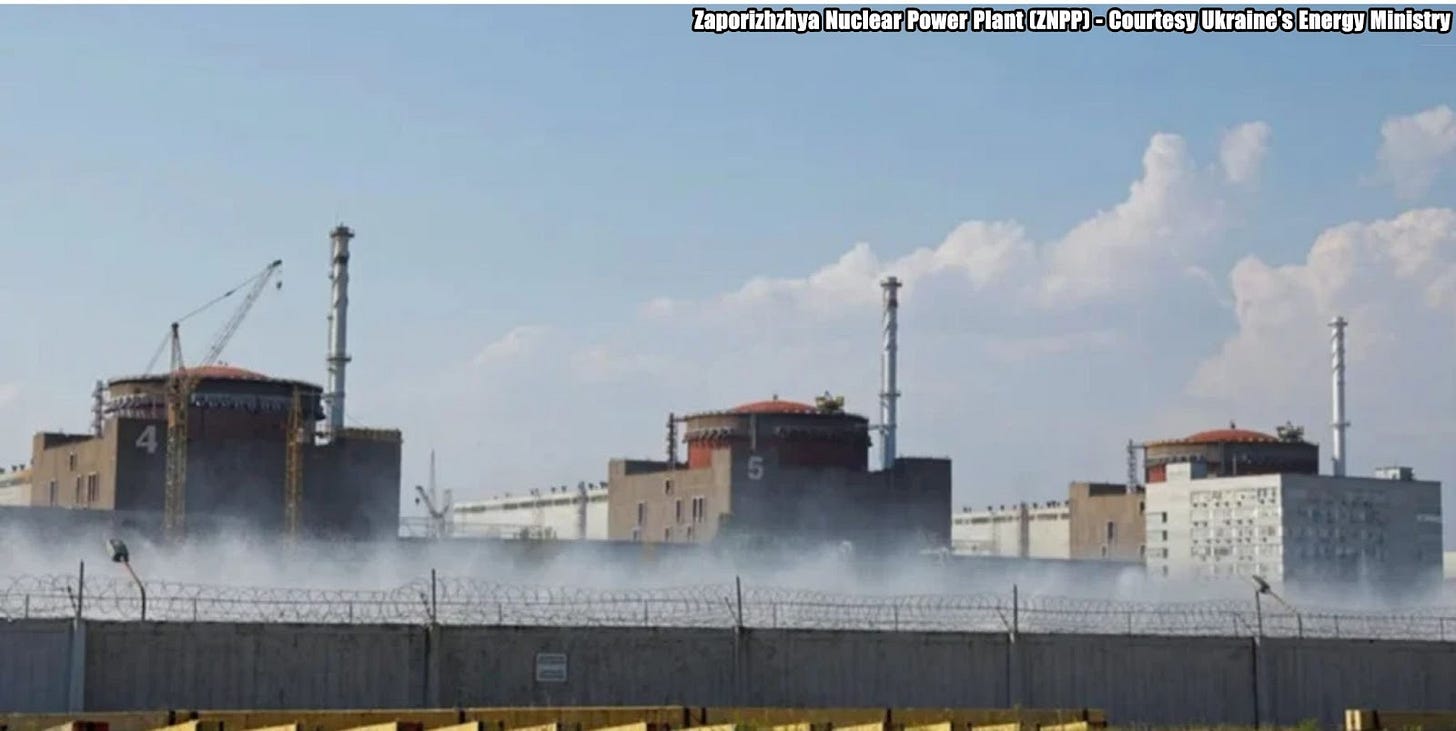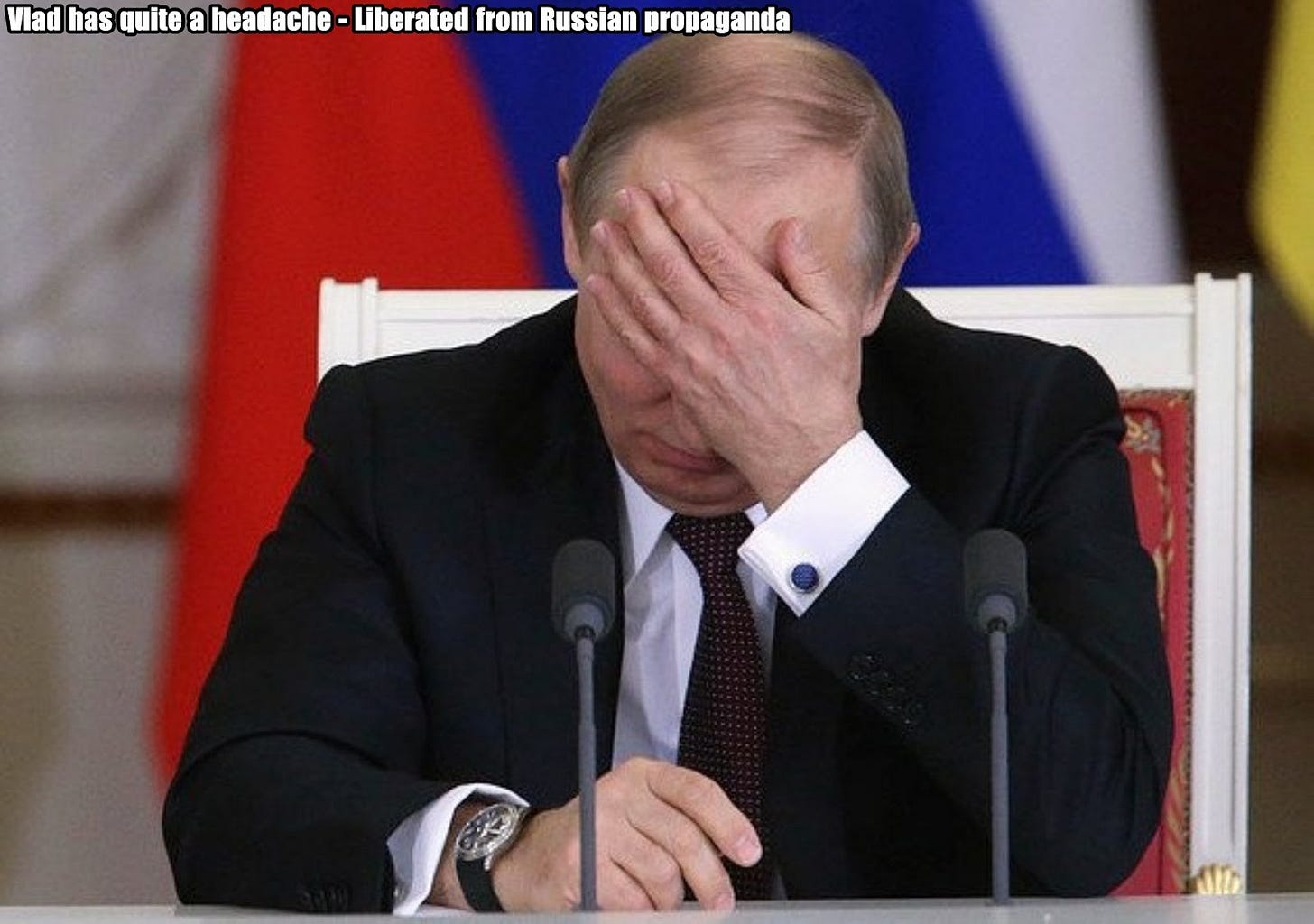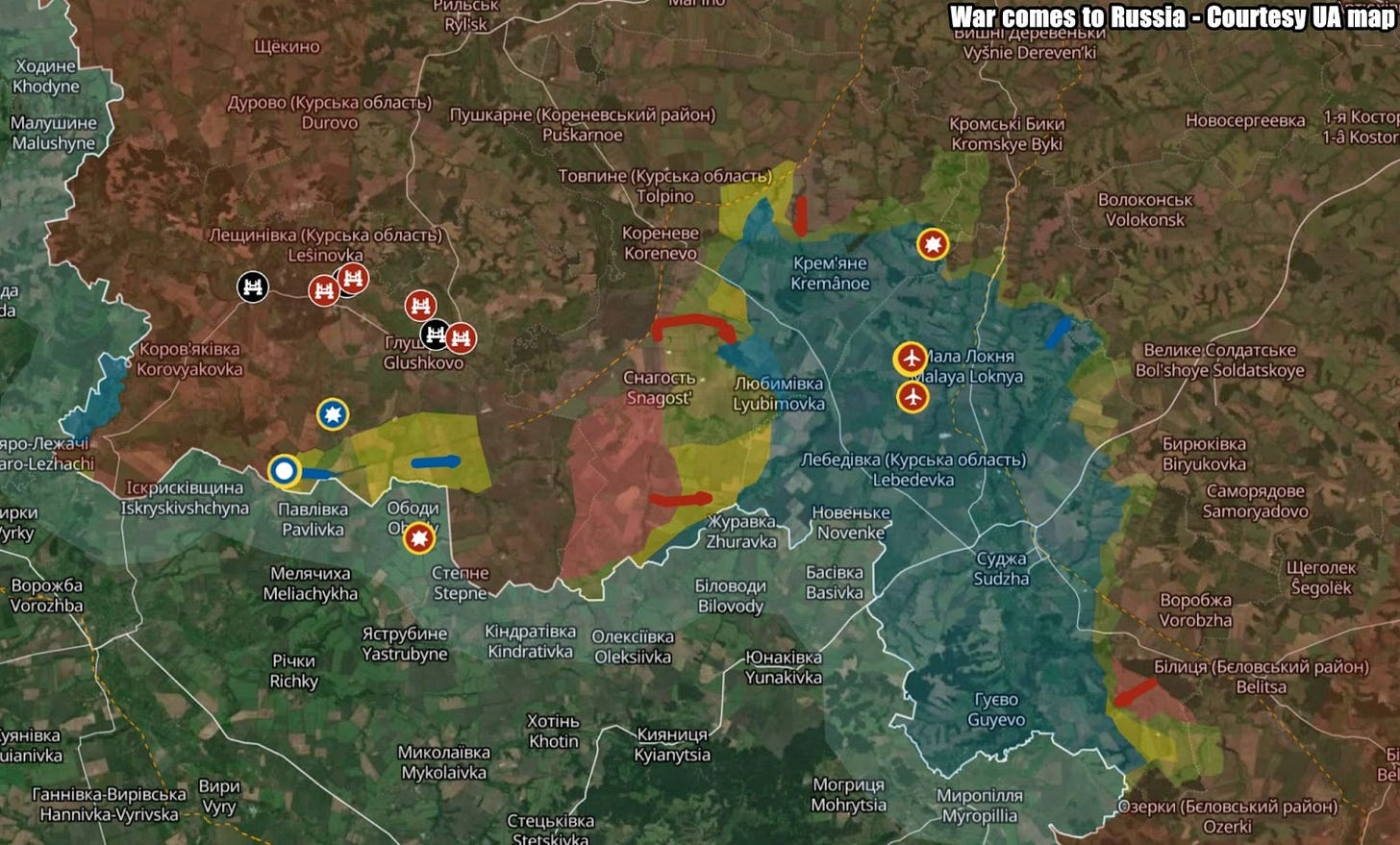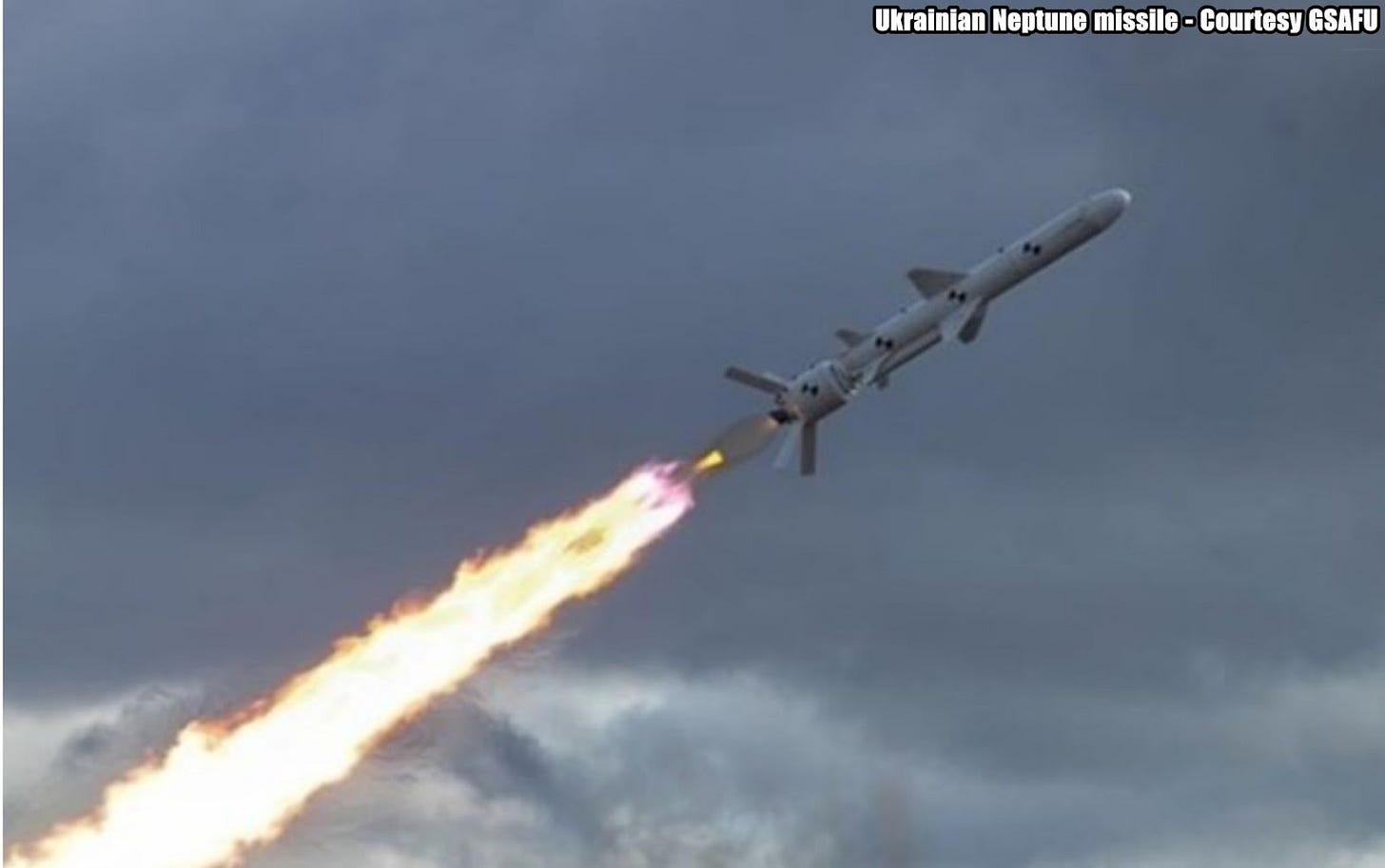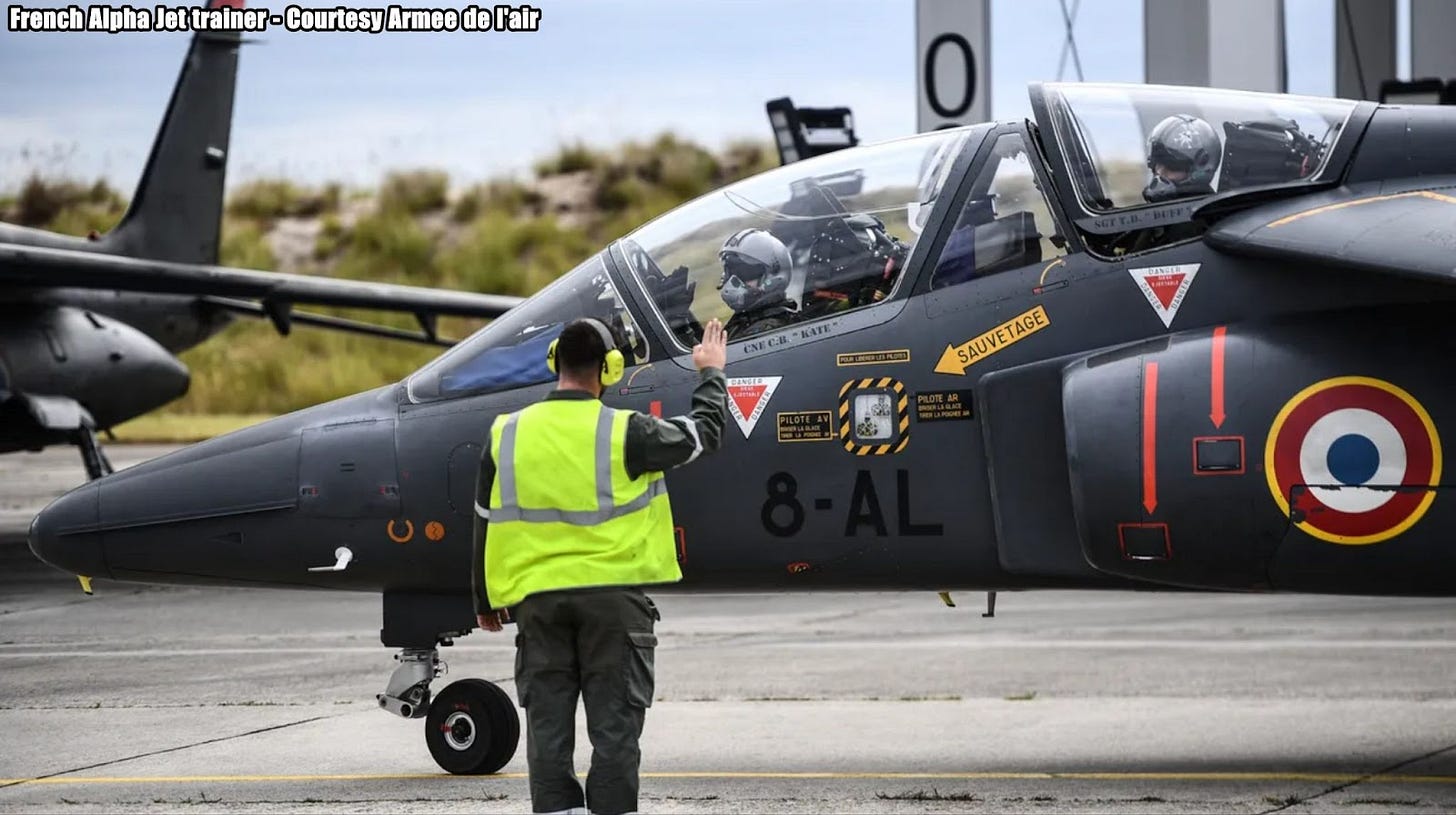Slava Ukraini! In early 2022 I began a Telegram channel aggregating news from a number of sources daily on the war in Ukraine. In June 2023 I began providing a daily draft for the Ukraine War Brief Podcast collecting news from over 70 sources daily, much of which formed the basis of the script. While the Podcast no longer exists I have continued to make this Brief available both on my own Substack and The People’s Media for those who wish to keep up with events on a daily basis.
All the latest news on the Russo-Ukraine War 6 days per week
ALONG THE CONTACT LINE
GSAFU Morning Report
The General Staff of the Armed Forces of Ukraine in its Operational Information update at 22:00 on Sep 19 stated that day 940 of the full-scale invasion of the Russian Federation against Ukraine was about to begin.
During the past day, 163 combat engagements took place. Over the past 24 hours, the enemy carried out 61 air strikes, 587 drone strikes and more than 3,500 artillery strikes across the positions of Ukrainian forces.
At the same time, Ukrainian soldiers continue to inflict losses in manpower and equipment on the occupying troops, exhausting the enemy along the entire front line and continue to disrupt the plans of Russian occupiers to advance deep into the territory of Ukraine.
Air Force Daily Report
61 ATTACK UAVS AND ONE GUIDED AVIATION MISSILE WERE BROKEN DOWN
On the night of September 20, 2024, the Russian occupiers attacked Donetsk region with three missiles of an unknown type, Dnipropetrovsk region with an Kh-59 guided air missile from the airspace of the TOT of the Zaporizhia region, as well as 70 Shahed type UAVs (launch areas: Primorsko-Akhtarsk, Kursk, Yeisk - Russian Federation).
Air force, anti-aircraft missile forces, mobile fire groups and units of the Defense Forces of Ukraine were involved in repelling the enemy's air attack.
As a result of the anti-aircraft battle, 61 attack UAVs and one Kh-59 guided air missile were shot down.
As a result of active countermeasures by the Defense Forces, nine enemy drones were lost in location in several regions of Ukraine (there was no information about casualties or destruction).
Air defence worked in Dnipropetrovsk, Kyiv, Vinnytsia, Cherkasy, Kirovohrad, Sumy, Poltava, Ivano-Frankivsk, Lviv, Khmelnytskyi, Mykolaiv, Odesa and Kherson regions.
The Russian Border Incursion
Ukrainian forces continue to advance marginally in Kursk
The Institute for the Study of War (ISW), a US based think tank, in its Sep 19 Russian Offensive Campaign Assessment assessed that Ukrainian forces recently marginally advanced west of the Ukrainian salient in Kursk Oblast amid continued Ukrainian assaults in the area on Sep 19. Geolocated footage published on Sep 19 indicates that Ukrainian forces recently marginally advanced east of Veseloye (west of the Ukrainian salient and south of Glushkovo).
A Russian milblogger also claimed that Ukrainian forces marginally advanced within central Medvezhye (southeast of Glushkovo). Chechen Akhmat Spetsnaz Commander Apty Alaudinov claimed during an interview published on Sep 19 that Ukrainian forces are trying to advance near Veseloye (south of Korenevo and near the international border). Ukrainian forces reportedly attacked west of the Ukrainian salient near Novy Put, Obukhovka, and Medvezhye (all south of Glushkovo).
Ukrainian forces recently advanced further on the northern side of Ukraine's salient in Kursk Oblast and continued assaults in the area on Sep 19. Geolocated footage published on Sep 19 indicates that Ukrainian forces recently advanced southeast of Sheptukhovka (northeast of Korenevo) and southeast of Naydenov (north of Sudzha). Ukrainian forces reportedly attacked within the Ukrainian salient near Lyubimovka, Obukhovka (both southeast of Korenevo and east of Snagost), Kremyanoye (east of Korenevo), and Borki (southeast of Sudzha).
Russian forces reportedly advanced in Kursk Oblast on Sep 19. Alaudinov claimed on Sep 19 that Russian forces advanced along the southwestern edge of the Ukrainian salient and seized Nikolayevo-Daryino and Daryino. Russian milbloggers claimed that Russian forces also advanced west of the Ukrainian salient near Obukhovka and along the outskirts of the Ukrainian salient southeast of Korenevo and northwest of Lyubimovka, but ISW has not observed confirmation of these claims.
Elements of the newly-formed "Kursk Knights" detachment (Donetsk People's Republic [DNR] "Pyatnashka" international volunteer brigade), which is reportedly staffed by residents of Kursk Oblast, are reportedly operating near Borki. Elements of the Russian 2nd Spetsnaz Brigade (Russian General Staff's Main Directorate [GUR]) and 810th Naval Infantry Brigade (Black Sea Fleet [BSF], Southern Military District [SMD]) reportedly continue to operate in Kursk Oblast.
Additional satellite imagery captured on Sep 19 shows that there are ongoing fires at the Russian Ministry of Defense (MoD) Main Missile and Artillery Directorate's 107th Arsenal in Toropets, Tver Oblast following the Sep 18 Ukrainian drone strike. A source within Ukrainian defense intelligence told Ukrainian outlet RBC Ukraine on Sep 18 that Ukrainian forces used over 100 drones during the Sep 18 drone strike, although it is unclear if the source is referring to the wider drone strike against targets in Russia or the Toropets strike specifically.
Ukrainian Kharkiv Group of Forces Spokesperson Colonel Vitaly Sarantsev stated on Sep 19 that Russian forces mined unspecified dams in Belgorod Oblast to possibly slow Ukrainian advances in the event of a Ukrainian incursion into Belgorod Oblast. Sarantsev noted that Russian forces may conduct false flag attacks against dams in Belgorod Oblast to blame Ukraine for the corresponding flooding and humanitarian disaster in order to further mobilize Russian society. Sarantsev added that Russian forces are actively building fortifications around Belgorod City in apparent preparation for possible Ukrainian cross-border activity.
The Khortytsia operational-strategic group
(Responsible for the northeastern part of Ukraine. )
Kharkiv Sector: Over the last day Ukrainian Defense Forces repelled 3 Russian attacks near Hatyshche and Tykhe.
Kupyansk Sector: Russian Forces carried out 11 unsuccessful offensive actions against Ukrainian defensive positions near Synkivka, Hlushkivka and Stelmahivka. 2 engagements are ongoing.
Lyman Sector: Russian Forces carried out 28 offensive actions against Ukrainian defensive positions near Cherneshchyna, Makiivka, Nevske and Torske. 1 engagement is ongoing.
Siversk Sector: Russian forces carried out 7 assaults in the vicinity of Verkhnokamianske, Ivano-Darivka and Vyimka.
Kramatorsk Sector: Russian forces carried out 2 offensive actions near Ivanivske and Kurdyumivka.
Toretsk Sector: Russian forces carried out 12 offensive actions with air support near Toretsk Shcherbynivka and Nelipivka.
The Tavria operational-strategic group
(Responsible for the central-eastern and southeastern part of Ukraine.)
Pokrovsk Sector : The enemy conducted 36 attacks against Ukrainian defences in this area over the last day in the vicinity of Vozdvyzhenko, Novotoretske, Myrolyuivka, Hrodivka, Mykolaivka, Novohrodivka and Marynivka. 4 engagements are ongoing.
Kurakhove Sector: The heaviest fighting over the last day took place in this sector. The enemy, supported by aviation, made 49 assaults on Ukrainian positions near Tsukuryne, Heorhiivka, Katerynivka and Konstantinivka. 13 engagements are ongoing.
Vremivka Sector: Russian forces made 5 assaults against Ukrainian positions near Rivnopil and Vuhledar.
Orikhiv Sector: Russian forces made 5 assaults against Ukrainian positions near Pyatvkhatky, Novoandiivka, Novodanylivka and Robotyne. 3 engagements are ongoing.
The Odesa operational-strategic group
(Responsible for Kherson, Qırım, (also known as Crimea) and the Black Sea.)
Prydniprovsk Sector: In this sector, over the last day, the situation has not changed significantly. Russian forces made 2 unsuccessful attempts to force Ukrainian units from their positions on the left bank of the Dnipro.
TEMPORARILY OCCUPIED TERRITORIES
IAEA passes resolution urging Russia to immediately withdraw from Zaporizhzhya NPP
The IAEA General Conference, during its 68th session, adopted a resolution by 65 votes, calling on Russia to immediately withdraw from the Zaporizhzhya Nuclear Power Plant (ZNPP) and return control of the facility to Ukraine. New Voice reports.
Ukraine’s Energy Ministry reported the resolution reaffirms that Ukrainian nuclear power plants, including Zaporizhzhya NPP, must operate under Ukraine’s full sovereign control. The IAEA calls for the immediate withdrawal of Russian military and other personnel from the ZNPP site and the return of the station to Ukrainian control to ensure its safety.
The resolution also expresses gratitude to the organisation’s Director General Rafael Grossi and the IAEA Secretariat for their efforts in addressing nuclear safety risks in Ukraine. Until the ZNPP is returned to Ukrainian control, the resolution demands that Russia provide the IAEA with unrestricted access to all facilities and information at the plant.
The document further supports continued IAEA efforts to mitigate nuclear safety risks in Ukraine, particularly following Grossi’s decision to send monitoring missions to high-voltage substations, which are critical to the operation of Ukraine’s nuclear power plants. The resolution also backs the IAEA’s ongoing technical assistance to Ukraine in ensuring the operation of its nuclear facilities.
It was specifically noted that during the Peace Summit held on June 15–16, initiated by Ukrainian President Volodymyr Zelenskyy, the importance of ensuring the stable operation of Ukrainian nuclear plants, particularly Zaporizhzhya NPP, under full Ukrainian control was emphasised.
Zelenskyy responded to the adoption of the resolution, thanking the IAEA General Conference.
THE HOME FRONT
Ukraine Bans Telegram Use For State, Military Officials
Ukraine's National Coordination Center for Cybersecurity on September 20 banned the use of the Telegram messenger app for state officials, military personnel, and employees of key infrastructure, citing security issues. Current Time reports.
The agency quotes the head of Ukrainian intelligence Kirill Budanov, who said that the ban on the use of Telegram – "is a matter of national security." As noted, he cited "reasonable data" about the availability of access to personal correspondence of Telegram users by Russian special services, including remote messages, as well as their personal data.
Those who use Telegram as "part of their job duties" will not be affected by the move. Last month, Telegram founder and CEO Pavel Durov, a native of Russia, was detained in Paris and later released on bail for alleged "complicity in the administration of an online platform to allow an illicit transaction, in an organised gang."
Earlier, the centre "Dossier" published an investigation that Russian security forces may have leverage over the Telegram team, part of which is still in the Russian Federation. The publication quoted one of its sources among security forces, according to which Russian special services "are confident that Telegram will not merge their data with the West."
The authors of the publication managed to find 15 key employees of the messenger who were or permanently resided in Russia at the time when the founder of the service Pavel Durov declared the transfer of the project abroad.
RUSSIAN WORLD
Putin denies MOD’s request for further mobilisation to offset losses
The Institute for the Study of War (ISW), a US based think tank, in its Sep 19 Russian Offensive Campaign Assessment stated that Russian President Vladimir Putin reportedly declined a request from the Russian Ministry of Defense (MoD) to offset Russian losses by declaring another mobilisation wave in spring 2024 likely to avoid political costs associated with involuntary reserve call-ups. Putin has since remained committed to his crypto mobilisation campaign, constraining Russia's mobilisation potential.
The Wall Street Journal (WSJ), citing a source “briefed” on an exchange between Putin and Russian MoD officials several months prior to the presidential inauguration in May 2024, reported that Putin dismissed the Russian MoD’s calls for another mobilisation wave. The source claimed that Putin instead stated his intent to only recruit people who were voluntarily signing military service contracts but that more Russian officials are convinced that mobilisation is inevitable. The source added that the Russian military's current manpower is insufficient to achieve Russia's long-term goal of occupying all of Ukraine, degrading overall Ukrainian combat capability, and protecting the Russian state border.
Kremlin Spokesperson Dmitry Peskov reiterated that Russia continues to rapidly recruit contract servicemen (kontraktniki) and volunteers and that these forces are sufficient for Russia's aggression against Ukraine in response to a request from WSJ. Putin has avoided declaring another partial mobilisation call-up of reservists since his decision to mobilise 300,000 troops in late September 2022 in response to successful Ukrainian counteroffensive operations, and Russia appears to lack the necessary manpower resources to simultaneously sustain the scale and tempo of Russian offensive operations in Ukraine and defensive efforts in Russian border regions.
A mobilised Russian servicemember and milblogger claimed in late August 2024 that the Russian government continues to rely on the remnants of regular military forces, mobilised personnel, and deceived short-term volunteers to continue Russian offensive operations in Ukraine, even though these elements are ill-prepared and have been suffering significant losses since October 2023.
Putin’s personal fears that mobilisation is a threat to his regime’s stability.
Mobilisation in Russia remains unlikely in the near to medium term due to Putin’s personal fear that mobilisation is a direct threat to his regime’s stability. ISW observed reports speculating about the possibility of Russia declaring another mobilisation wave prior to Putin’s inauguration and following the Ukrainian incursion into Kursk Oblast in August 2024, but Putin has not yet authorised such mobilization.
Russian opposition outlet Meduza reported that sources close to the Russian government claimed that the Kremlin entertained the idea of mobilisation immediately after Ukraine's incursion, but that the Russian Cabinet of Ministers and Kremlin-affiliated businessmen opposed these considerations. Putin has also been consistently signalling throughout the incursion his commitment to recruiting volunteers by boasting about the number of volunteers interested in fighting in Ukraine and meeting with Russian volunteers in response to the incursion
Putin notably did not seize on the incursion as an opportunity to condition Russian society for mobilisation in the immediate to medium term, instead choosing to form new irregular formations and expand Russian volunteer recruitment efforts.
The Kremlin and the Russian MoD notably shocked Russian society with the declaration of partial mobilisation in late September 2022, and Putin likely seeks to avoid societal backlash in response to a new mobilisation wave at this time.
NEWS WORLDWIDE
EU Commission head to announce €35 billion loan to Ukraine
The European Union plans to provide a €35 billion loan secured by future profits from frozen Russian central bank assets to guarantee more predictable financial support for Ukraine, the Financial Times reports.
According to 3 sources, European Commission President Ursula von der Leyen will announce her visit to Kyiv.
The loan is part of a $50 billion plan to help Ukraine, which emerged from negotiations with the United States and the Group of Seven countries.
In June, the G7 leaders agreed to provide Ukraine with a $50 billion loan to be repaid from the proceeds of Russia's frozen assets.
This week, the Financial Times reported that the EU is preparing to provide new funding by the end of the year, regardless of US participation. The unilateral action comes amid concerns in Brussels that Hungary will prevent the bloc from providing the guarantees needed for the US to participate in the asset freeze.
“We are now confident we can deliver to Ukraine very quickly, a loan that is backed by the windfall profits from the Russian assets,” von der Leyen said speaking next to Ukrainian President Volodymyr Zelenskyy.
According to the agency, the final figure may vary from 20 to 40 billion euros and will be set by the European Commission after consultations with member states.
“We are doing our share with €35bn and I am absolutely confident the others will do their share,” von der Leyen said.
During her eighth visit to Ukraine, Von der Leyen wrote on the X network that she would meet with leaders in Kyiv to discuss a range of issues from winterization to defence, EU accession, and progress on G7 loans.
MILITARY & TECH
Ukraine reportedly uses triple-loaded Neptune missile to strike Russian ammunition depot in Tver region
Analysts report that Ukraine launched a combined strike on ammunition depots in Toropets, deploying a modified Ukrainian "Neptune" missile featuring triple the usual explosive payload. UAwire reports.
French news outlet Le Monde published a detailed account of how Ukraine decimated a massive Russian ammunition stockpile using innovative projectiles.
Unprecedented resources mobilised by the Ukrainian forces have significantly amplified the devastation. An inside military source in Kyiv disclosed that over 100 drones were involved in the operation. Pro-Kremlin Telegram channels mentioned the possibility of a new "Palianytsia" missile drone, whose successful test was announced by President Volodymyr Zelensky at the end of August. In contrast, Ukrainian site Defense Express leans towards the theory of a modified "Neptune" missile with a tripled explosive payload.
The likelihood is high that the strike was a hybrid attack, utilising Ukrainian rocket drones and cruise missiles.
Early Wednesday morning, September 18, a series of powerful explosions obliterated a major ammunition depot near the town of Toropets in the Tver region. The hit depot, labelled Arsenal No. 107, housed 240 tons of ammunition and was situated 500 kilometres north of the Ukrainian border. The blasts were so intense that they were recorded by seismic monitoring systems. The initial tremors registered a 2.8 magnitude at 3:56 AM, followed by seven smaller shocks ranging from 2 to 2.8.
Ongoing explosions have been heard, indicating that the situation remains uncontrolled hours after the attack. Satellite images released by American private space company Maxar show persistent fires in the forested area adjacent to the depot.
Multiple videos capture the distinctive whistling noise of rocket engines, suggesting, at least in part, the use of cruise missiles in the assault. Previously, deep-target attacks within Russian territory were conducted using turbo-propeller drones, which are slower and more susceptible to air defence systems.
In its daily briefings, the Russian Ministry of Defense maintains that "all Ukrainian drones were shot down," with the incident attributed to "falling debris." Notably, the ministry fails to mention the Tver region when listing the areas where drones were reportedly intercepted. Russian media have largely ignored the incident, evidently to withhold distressing news from the public.
First group of Ukrainian pilots complete French jet training
The first cohort of Ukrainian pilots have completed Alpha Jet training in France, the French Armed Forces announced on Sept. 20. The Kyiv Independent reports.
The French Air Force has been training Ukrainian pilots since March 2024 as part of the international coalition to provide Ukraine with F-16 fighter jets.
The training of new pilots has been considered one of the main bottlenecks for expanding Ukraine's F-16 capabilities.
The training program shows "France's firm support for the Ukrainian war effort," the French Armed Forces said on X.
French newspaper Le Monde reported in June that the French Air Force had committed to training 26 Ukrainian pilots.
This number is significant as the French Air Force usually certifies around 30 pilots a year, after up to five years of training.
The program began in March with 10 Ukrainian pilots, who are training using Alphajets fitted with a panel that simulates the instruments in the cockpit of an F-16, Le Monde said.
A group of Ukrainian pilots also recently arrived in Romania to start training on F-16 fighter jets, Defense Minister Rustem Umerov said on Sept. 12.
Other Ukrainian pilots have undergone training in the U.S. or Denmark, though Copenhagen said it would not provide instructions to Ukrainian aviators on its territory past 2024.
France is upgrading Mirage 2000-5F fighters for Ukraine
France is upgrading some of the Mirage 2000-5F fighters destined for Ukraine so that they can hit ground targets. Militarnyi reports citing the French publication SudOuest
The most modern version of the Mirage 2000, the 2000-5F, was only used by the Armee de l’air as an air superiority fighter, although earlier models were multi-role.
However, based on Ukraine's urgent needs to have multifunctional fighter jets that can fight air targets and hit ground objects. France decided to modify some Mirage 2000-5F which they had undertaken to supply to Ukraine, as part of military assistance for this purpose.
French president Emmanuel Macron stated in June of 2024 that Ukraine will receive Mirage 2000-5F fighters. He also said that in order to prepare for the management of these fighters, France is organising six-month training courses for Ukrainian pilots.
According to preliminary plans, the Air Force of Ukraine should receive these Mirage fighters by the end of 2024.
It is believed that the current modifications will allow these aircraft to employ both the French made AASM Hammer and the American made JDAM precision bombs.
That’s it for today’s Draft folks if you would like to keep up with events in Ukraine daily please consider subscribing, its free!
Feel free to share this update with your friends. Heroyam Slava!







